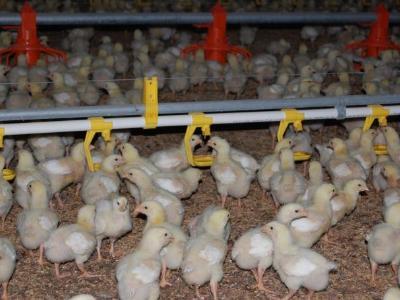Consumer demand is best illustrated by providing choices

Activists groups are pushing slower-growing broilers as a higher welfare alternative to modern breeds, but they don't seem to be willing to let consumers demonstrate that they want them at the cash register. | Terrence O'Keefe
Taking a closer look at Compassion in World Farming objections to the National Chicken Council report on the environmental impact of slower growing broilers
The opinion piece authored by Katya Simkhovich, food business coordinator, Compassion in World Farming, raised three primary objections to the National Chicken Council’s study of the environmental impact of slower growing broilers. The first objection Simkhovich raises is that “the study offers little to back up its conclusions ... is not peer-reviewed, does not list its authors, and does not appear to cross-reference data used in calculations.”
I asked Tom Super, vice president of communications, National Chicken Council, how the study was conducted and what plans exist to share more of the methodology used. He said: “There are plans to pursue more formal presentation and publication of this study in a peer-reviewed forum to validate this research, which will more clearly define the methodology used. The math is accurate and easily validated under this model.”
Super went on to explain: “This study’s intent was not to answer all questions about broiler production, but specifically looked at the economic and environmental impacts of slow-growing versus conventionally raised chickens. This study provides a snapshot of only one facet of broiler production, and so can’t responsibly be used to extrapolate any other conclusions beyond what the model was intended to address – particularly related to animal welfare – as no direct measures for animal welfare were included.”
“Regarding the first concern on the references, the first two references are cited because the slow-grow model is based on the same model used to assess the environmental/economic impact of antibiotic-free in those papers. Both abstracts were presented at international conferences and had to go through a selection process. Additionally, both are published and the one in Food Distribution Research went through peer review.”
The second objection raised by Simkhovich regards the study’s assumption that mortality will be the same for modern breeds and slower growing breeds, but then then the study concludes that replacing modern breeds with slower growing breeds will result in an additional 72.4 million dead broilers on the farm.
Super said that the additional farm deaths would result because slower growing broiler breeds don’t yield as much meat as modern breeds do. This means more birds would need to be raised to produce the current amount of meat, and more birds placed with the same flock mortality percentage means more total deaths.
The third objection cited by Simkhovich regards stocking density. She said: “The study compares apples and oranges. It factors in a decrease in stocking density for slow-growth birds, but not for faster-growing breeds. While this is of course important for broiler welfare, it distorts the direct breed comparison.”
When asked about this objection, Super explained that the study used the Global Animal Partnership Program requirements to estimate the production costs and their requirement is a lower density for raising slower growing broilers. It was assumed that modern genetic stock would be raised as they currently are to give a full comparison of the environmental impact of adopting this the Global Animal Partnership program with slower-growing broilers.
What do consumers really want?
Finally, Simkhovich said that the study ignores consumer “who are increasingly opposed to buying chickens raised in poor living conditions and who suffer as a result of their genetics.”
When questioned about what consumers want, Super said, “What the majority of consumers actually want is choice. Slow-grow, conventional, raised without antibiotics – each of these production practices dictate choices about how chickens’ living conditions are managed. And while consumer purchase patterns are based on a variety of factors, it’s clear that single trait genetic ‘solutions’ cannot support or create sustainable food production.”
I agree with Super that giving consumers choice is the answer. It seems to me that if proponents of alternative means of producing animal products, whether cage-free eggs or slower growing broilers, were so convinced that this is what consumers really wanted, they would just let consumers prove it with their wallets and not start campaigns to get retail and food service outlets to eliminate choice.
Terrence O'Keefe is editor of Egg Industry and content director of agri-business at WATT Global Media.
Terrence O’Keefe, WATT’s content director of agri-business, provides his perspective on developments affecting processing and food safety related issues in the poultry, egg and swine industries. Terrence has covered the poultry industry as an editor for over a decade and also brings his experience in plant management and live production to bear on today’s issues.
Related news
 Planning and regulating breeder flock size
Planning and regulating breeder flock size With growing demand for poultry meat in the future, initial planning of the breeder/hatchery aspect of the production chain has to take into account this future
 Re-learning how to grow broilers
Re-learning how to grow broilers Worldwide slow-growing broilers are gaining ground. However, it's still an art to adapt one's management style when for decades the focus has been on maximum
 US team identify wooden breast biomarkers
US team identify wooden breast biomarkers University of Delaware researchers have analysed the genes involved in wooden breast disease and have identified biomarkers for the disorder.